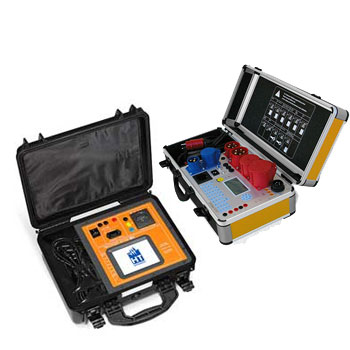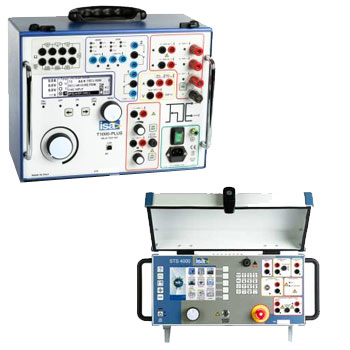- IIoT-capable with LPWAN transmission
- High transmission range for the measured values (up to 10 km [6.2 mi]) with long battery life (up to 10 years)
- Battery-operated or external power supply for radio transmission possible
- Easy integration thanks to several radio standards
 Datasheet Datasheet |
 User Manual User Manual |
- IIoT-capable with LoRaWAN® transmission
- Battery-operated LoRaWAN® wireless transmission based on LPWAN technology
- High transmission range for the measured values (up to 10 km [6 mi]) with long battery life (up to 10 years)
- Two intrinsically safe analogue input signals with 4 ... 20 mA
- The determination of differential pressures is possible

 Datasheet Datasheet |
 User Manual User Manual |
- IIoT-capable with LoRaWAN® transmission
- Battery-operated LoRa® radio transmission based on LPWAN technology
- High transmission range for the measured values (up to 10 km) with long battery life (up to 10 years)
- Exchange of the radio unit possible in ATEX zones

 Datasheet Datasheet |
 User Manual User Manual |
- nominal pressure: 0 ... 100 mbar up to 0 ... 400 bar
- accuracy: 0.1 % FSO
- output signal: RS485 mit Modbus RTU Protokoll
- perfect thermal behaviour
- excellent long term stability
- reset function
 Datasheet Datasheet
|
 User Manual User Manual
|
- nominal pressure: 0 ... 100 mbar up to 0 ... 400 bar
- accuracy: 0.25% FSO
- output signal: RS485 with Modbus RTU protocol
- perfect thermal behaviour
- excellent long term stability
- reset function
 Datasheet Datasheet |
 User Manual User Manual |
- nominal pressure: 0 ... 100 mbar up to 0 ... 400 bar
- accuracy: 0.25% (opt. 0.1%) FSO
- output signal: RS485 mit Modbus RTU Protokoll
- CIP / SIP cleaning up to 150 °C
- diaphragm with low surface roughness
- reset function
- ingress protection IP 67 / IP 69
 Datasheet Datasheet |
 User Manual User Manual |
- nominal pressure: 0 ... 16 bar up to 0 ... 1000 bar
- accuracy: 0,5 % FSO
- output signal: RS485 with Modbus RTU protocol
- wetted parts of special stainless steel
- insensitive to pressure peaks
- high overpressure capability
- oil and grease free according to ISO 15001 (e.g. for oxygen applications)
 Datasheet Datasheet |
 User Manual User Manual |
- Low operating costs through intelligent measurementcontrol
- Easy integration thanks to several radio-standard options
- Numerous application possibilities – also as retrofit
- Robustly built, permanently reliable pressure measurement
- Risk minimisation through condition monitoring
 Datasheet Datasheet |
 User Manual User Manual |
- IIoT-capable measuring instrument in combination with model NETRIS®3 radio unit
- Intrinsically safe version Ex i per ATEX, IECEx
- Measuring ranges from 0 … 1 to 0 ... 1,600 bar [0 ... 15 to 0 ... 20,000 psi] as well as vacuum and +/- measuring ranges

 Datasheet Datasheet |
 User Manual User Manual |
- Accuracy up to 0.01 % IS-50
- Measuring range from -1 ... 400 bar (-15 ... 6,000 psi)
- RS-232 or RS-485 interface
- Compact design
 Datasheet Datasheet
|
 User Manual User Manual
|
- Pressure 0,8...1000 bar (abs./rel.)
- Output
- RS485 (digital)
- 4...20 mA (2-wire)
- 0...10 V (3-wire)
- 0…2,5 V / 0…5 V (3-wire)
- 0,1…2,5 V (3-wire)
- Accuracy, Error Band (10…40 °C)
- type 0,05 %FS (digital)
- type 0,1 %FS (2-wire)
- type 0,1 %FS (3-wire)
 Datasheet Datasheet
|
 Bedienungsanleitung Bedienungsanleitung
|
- IIoT-ready and future-proof thanks to analogue and digital signal transmission (Modbus®) as well as wireless (LoRaWAN®)
- Time-saving instrument configuration and display of current measured values on the smartphone via NFC or WIKA app
- No cabling effort for retrofit projects thanks to battery operation and LoRaWAN®
- Decentralised data node − up to four input signals − reduces cabling effort and installation costs
- Reduction of installation costs due to simple wall or DIN rail mounting in a control cabinet
 Datasheet Datasheet |
- Integrated air flow calculation based on all common formulas
- IIoT-ready and future-proof thanks to analogue and digital signal transmission (Modbus®) as well as wireless (LoRaWAN®)
- Time-saving instrument configuration and display of current measured values on the smartphone via NFC or WIKA app
- Precise measuring results, even under extreme ambient conditions
- Reduction of installation costs due to simple wall or DIN rail mounting in a control cabinet
 Datasheet Datasheet |
- Decentralised PID controller – up to four input signals – reduces cabling effort and installation costs
- Integrated air flow calculation based on all common formulas
- IIoT-ready and future-proof thanks to analogue and digital signal transmission (Modbus®) as well as wireless (LoRaWAN®)
- Time-saving instrument configuration and display of current measured values on the smartphone via NFC or WIKA app
- Reduction of installation costs due to simple wall or DIN rail mounting in a control cabinet
 Datasheet Datasheet |

IIoT Pressure Monitoring – from Sensor to Cloud
IIoT pressure monitoring turns measurements into reliable decisions. We integrate pressure sensors and differential pressure transmitters via RS-485/Modbus RTU, IO-Link, HART, or Ethernet into control rooms or cloud platforms. An edge gateway captures, scales, and timestamps data, transmits it securely via MQTT/HTTPS, and enables real-time dashboards, threshold alarms, reporting, and complete traceability.
The integration is vendor-agnostic (incl. WIKA, Siemens SITRANS) and suited for both new builds and retrofits. Typical use cases: filter/room pressure, compressed-air/energy monitoring, pump/process monitoring, and quality assurance across water/wastewater, energy, chemicals, food, pharma, and machinery.
With TLS/VPN, role- and permission models, and audit logs, you meet security and compliance requirements. ICS Schneider Messtechnik provides consulting, device selection, register mapping, topic design, commissioning, and documentation — ISO 9001:2015 certified. This turns sensors into transparent, service-friendly IIoT assets that reduce downtime and cut costs.
FAQ on IIoT Pressure Monitoring
Answers to the key questions on connecting pressure and differential pressure sensors to edge devices, MQTT/HTTPS, and your IT/OT systems — including security, topology, intervals, and practical tips.
Are all RS-485/Modbus sensors automatically IoT devices?
No. RS-485 is the field layer. IoT capability only emerges with an edge/gateway (Modbus→MQTT/HTTPS), stable IDs, secure transport (TLS/VPN), and alarm/telemetry logic.
Which protocols typically work together in these architectures?
Field: Modbus RTU, IO-Link, HART. Toward IT/cloud: MQTT or HTTPS/REST — robust polling below, efficient telemetry above.
| Layer | Protocol | Benefit |
|---|---|---|
| Field | Modbus RTU (RS-485) | Polling many sensors, long cable runs |
| Field | IO-Link | Parameterization, events, diagnostics |
| Field | HART (4–20 mA) | Analog plus digital variables |
| Edge → IT | MQTT | Lightweight, fast telemetry |
| Edge → IT | HTTPS/REST | Batch, configuration, integrations |
Can we integrate existing 4–20 mA transmitters?
Yes. Using an edge gateway with analog inputs/HART modem, signals are digitized, scaled, and securely published into your system.
What polling intervals are practical?
Depends on process dynamics, network load, and energy budget. Guidelines:
| Use case | Interval | Note |
|---|---|---|
| Filter/room pressure | 1–5 s | Fast threshold alarms |
| Pump monitoring | 5–10 s | Publish start/stop as events |
| Compressed air/energy | 10–60 s | Trends + peak events |
| Slow processes | 60–300 s | Statistics/median recommended |
Do I strictly need a cloud platform?
No. On-prem is possible (local MQTT broker, SCADA/Grafana). Cloud pays off with multiple sites, fleet management, and centralized analytics.
What does a clean MQTT topic scheme look like?
A proven pattern with clear hierarchy and stable IDs:
plant/{site}/line/{unit}/sensor/{id}/pressure
plant/{site}/line/{unit}/sensor/{id}/status
plant/{site}/line/{unit}/sensor/{id}/alarm
How do I secure communication and access?
TLS (MQTTS/HTTPS), per-gateway certificates, VPN/zero-trust, role-based permissions, API keys/certificates, audit logs, signed firmware, and regular patch/certificate management.
Polling or publish-on-change?
Both: Modbus requires polling; the edge additionally publishes “on change” (delta/timeout) to reduce network load and improve responsiveness.
Can alarms be triggered locally at the edge?
Yes. Check thresholds (Hi/Lo, hysteresis), rate-of-change, and deadbands locally; generate timestamped events even if the cloud link is down.
How should I handle units, scaling, and resolution?
Publish unit/scale as retained properties, keep payloads consistent (e.g., Pa or bar), and format server-side. Define fixed units for reports.
What power supply is typical?
| Component | Supply | Note |
|---|---|---|
| RS-485 sensor | 12–30 V DC | Apply termination/biasing correctly |
| 4–20 mA/HART | 24 V loop power | Observe communication resistor |
| Edge gateway | 24 V DC / PoE | UPS/buffer, watchdog |
| LoRa/LTE node | 12/24 V or battery | Interval ↔ battery life |
How do I design an RS-485 line correctly?
Daisy-chain topology, 120-Ω termination at both ends, biasing, short stubs, clean address assignment, and documentation of baud rate/parity/addresses.
Which baud rates are robust in practice?
Often 9,600–38,400 baud. The longer the cable/more nodes, the more conservative you should be. Shielding, grounding, and correct termination are essential.
How do I integrate IO-Link devices into my IoT?
IO-Link master → edge. Import the IODD, define the process-data cycle, map events, and convert to a unified data model (e.g., pressure.value, device.health).
What belongs in the long-term historian?
Raw values (optionally down-sampled), min/max/avg, alarms/acknowledgements, device status, firmware/config changes, and calibration/maintenance events (for audit/quality).
What does a typical pilot look like?
Workshop → set up edge + 3–5 sensors → mapping & topics → dashboards/alarms → security baseline → acceptance & ROI review → roll-out plan.
Does this work in hazardous areas (ATEX/IECEx)?
Yes, with suitable Ex sensors/barriers and enclosures; place gateways in safe zones, use intrinsically safe interfaces, and provide complete documentation for explosion protection.
How do I detect compressed-air leaks efficiently?
Measure Δp at key points, analyze trends (night base load, rapid drops), apply edge rules (rate-of-change, percentage thresholds), and correlate with compressor starts.
What does integration roughly cost?
Depends on device count and integration depth. Rough guidance:
| Scope | Deliverables | Effort (estimate) |
|---|---|---|
| ≤ 10 sensors | Edge, wiring, basic dashboard | 1–3 person-days |
| 10–50 | Multiple segments, alarms, roles | 3–10 person-days |
| 50+ | Fleet mgmt, templates, reporting | PoC → phased roll-out |
Which compliance/security points matter?
TLS/VPN, role-based approvals, hardened gateways, patch/certificate management, logging, GDPR-compliant storage, and a clear responsibility/SLA plan.




















































































































































































![WIKA Models PGU23.100, PGU26.100 Bourdon tube pressure gauge for connection to WIKA radio unit Safety version, NS 100 [4"]](https://www.ics-schneider.de/wp-content/uploads/2025/03/Typen-PGU23.100-PGU26.100-350x350.jpg?x69348)
![WIKA Models PGW23.100, PGW26.100 Bourdon tube pressure gauge with wireless transmission Safety version, NS 100 [4"]](https://www.ics-schneider.de/wp-content/uploads/2025/03/Typen-PGW23.100-PGW26.100-350x350.jpg?x69348)




